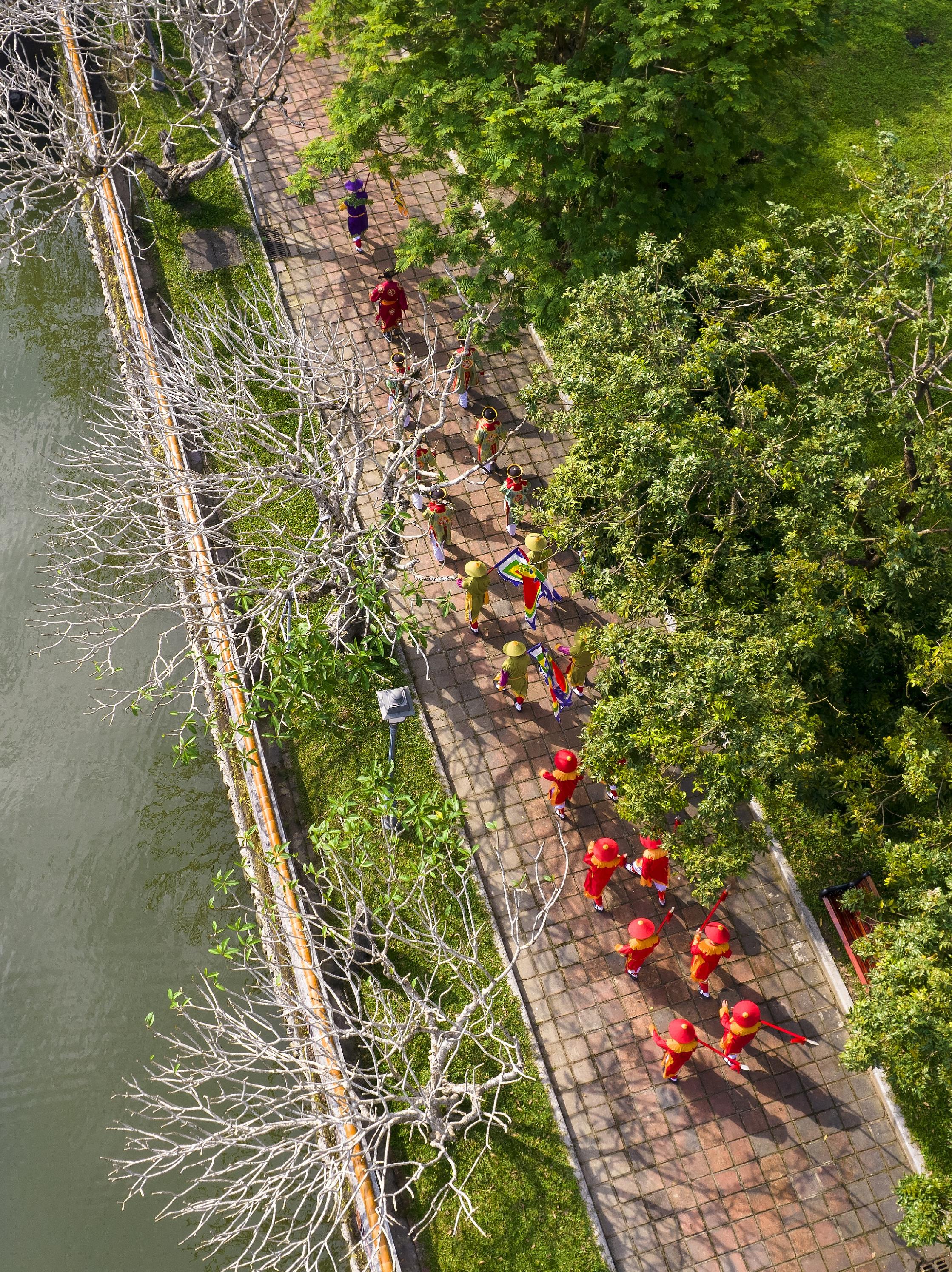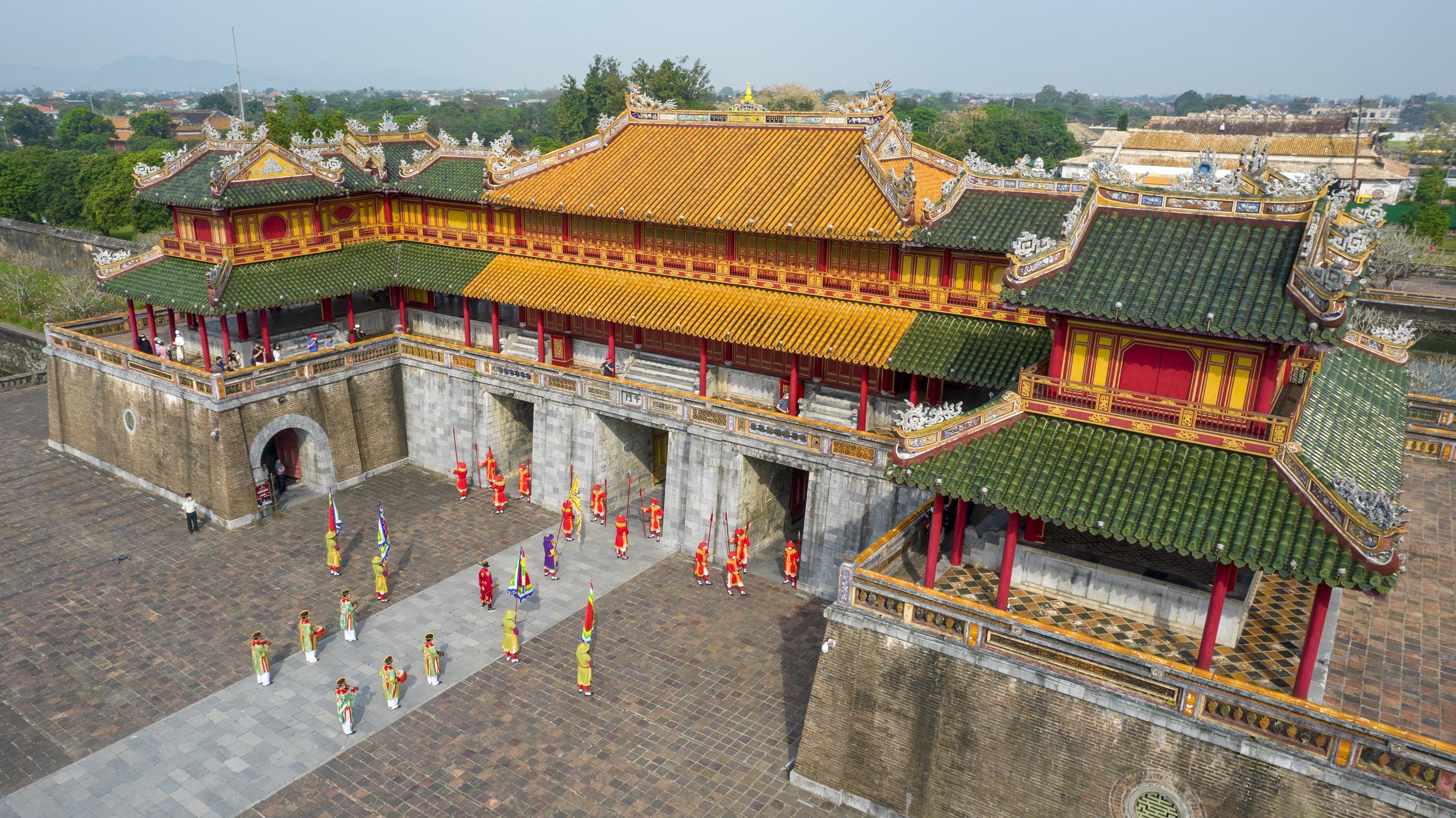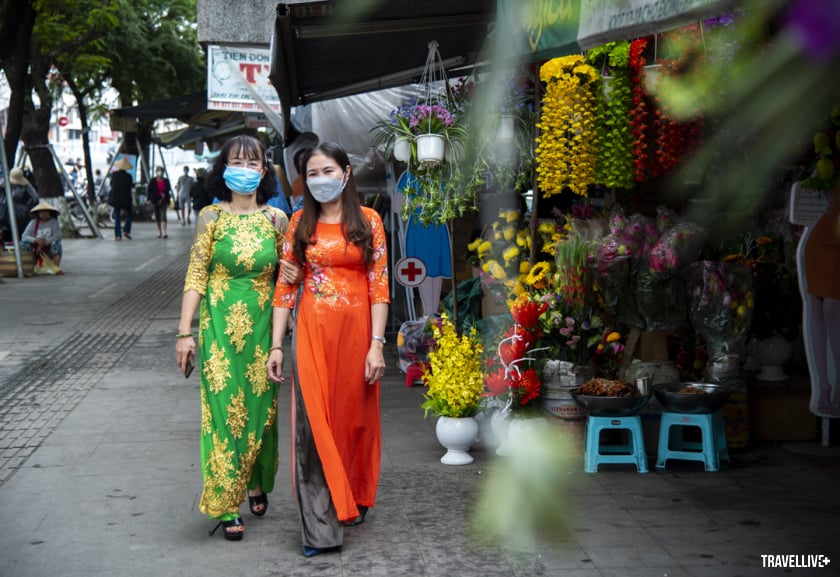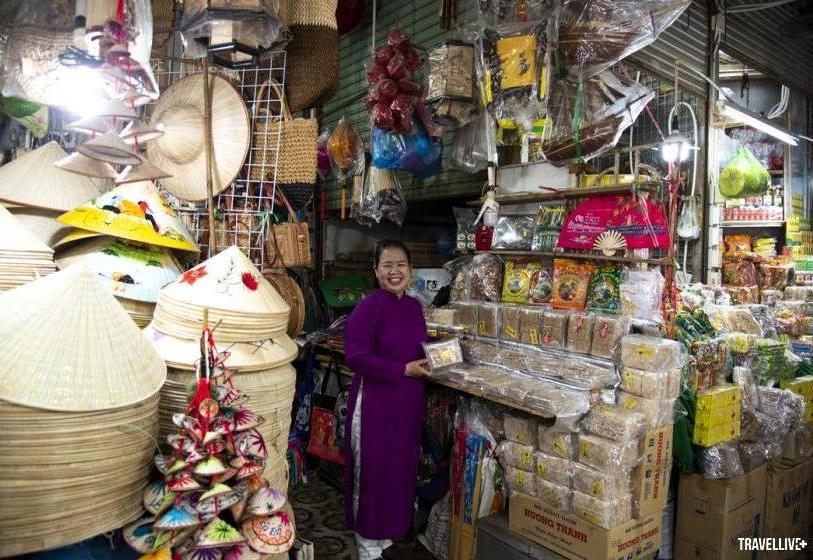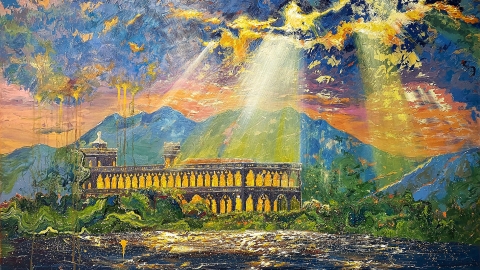"In 2019, before the pandemic, we visited Hue to visit the Imperial City for the first time. We were very excited because we knew that Ca Hue was being performed in the Imperial City. But then, because the minimum number of attendees was not enough, the Ca Hue program was not held," said Khai Quan, one of two members of the Wanderful Dreamers travel channel. "But what surprised me more was that while walking in the Imperial City, I happened to hear a foreign guest asking the tour guide -What does that poster about Ca Hue mean?- and the tour guide said:Don't mind, because that program is... time consuming to watch.".
After more than two years of the pandemic, Mr. Khai Quan was once again "surprised" by the appearance of Hue tourism. That was when the city officially announced the return of Ca Hue in the Imperial City, and this time, completely free.
Hue brings cultural heritage back to the Royal Court, and it's completely free.
At the time you read this article, unique cultural programs are taking place every day at the Imperial City - Hue. Organized by the Hue Monuments Conservation Center to attract visitors to the heritage site, the series of programs starts fromchanging of the guard ceremonyin the early morning, to the Hue Ca Hue or Royal Tuong performances in the afternoon. The most special thing is that the activities take place regularly every day and there are no tickets.
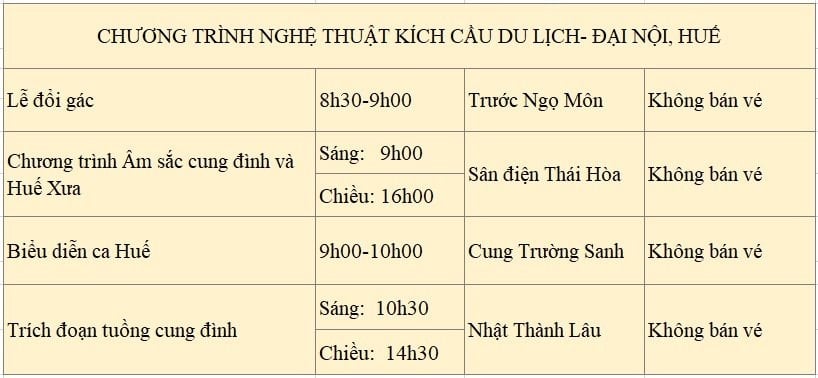
Information on free performances at Hue Imperial City. (Photo: FB Thien Dinh Phan)
At this time, Thai Hoa Palace - a popular relic site located in the Imperial City - is undergoing restoration. The Hue Monuments Conservation Center has quickly deployed virtual reality tourism using 3D technology; through large LED screens installed in the front and back of the palace, visitors can still easily "visit" the images.

The changing of the guard ceremony is reenacted in front of Ngo Mon Gate at 8:30 every day, attracting both tourists and locals. (Photo: Le Huy Hoang Hai)
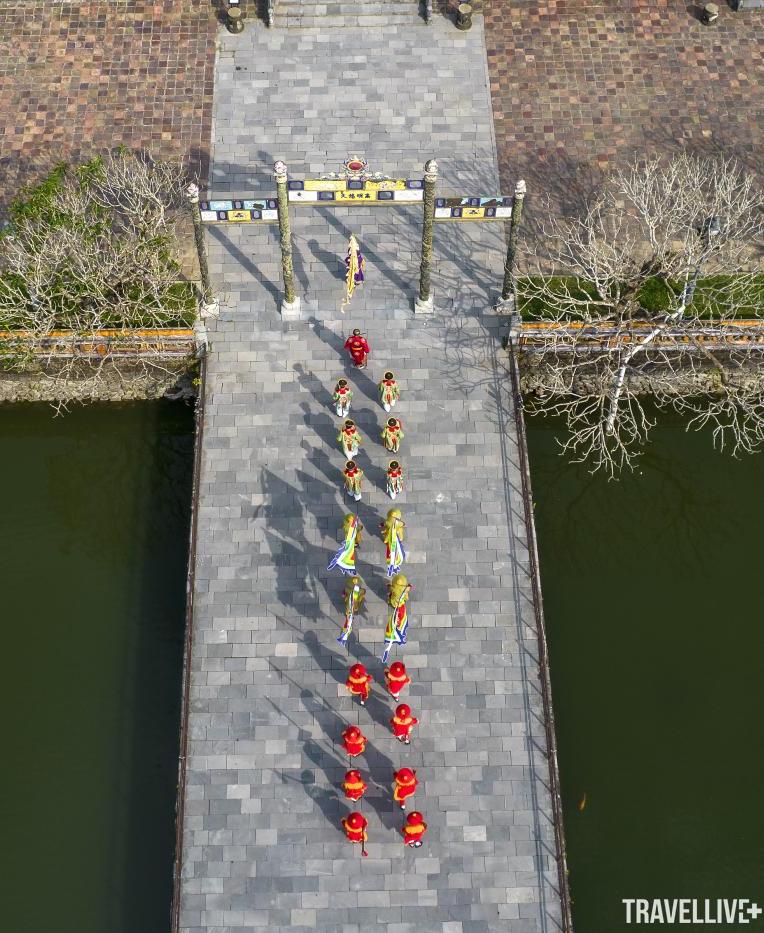
Photo: Le Huy Hoang Hai
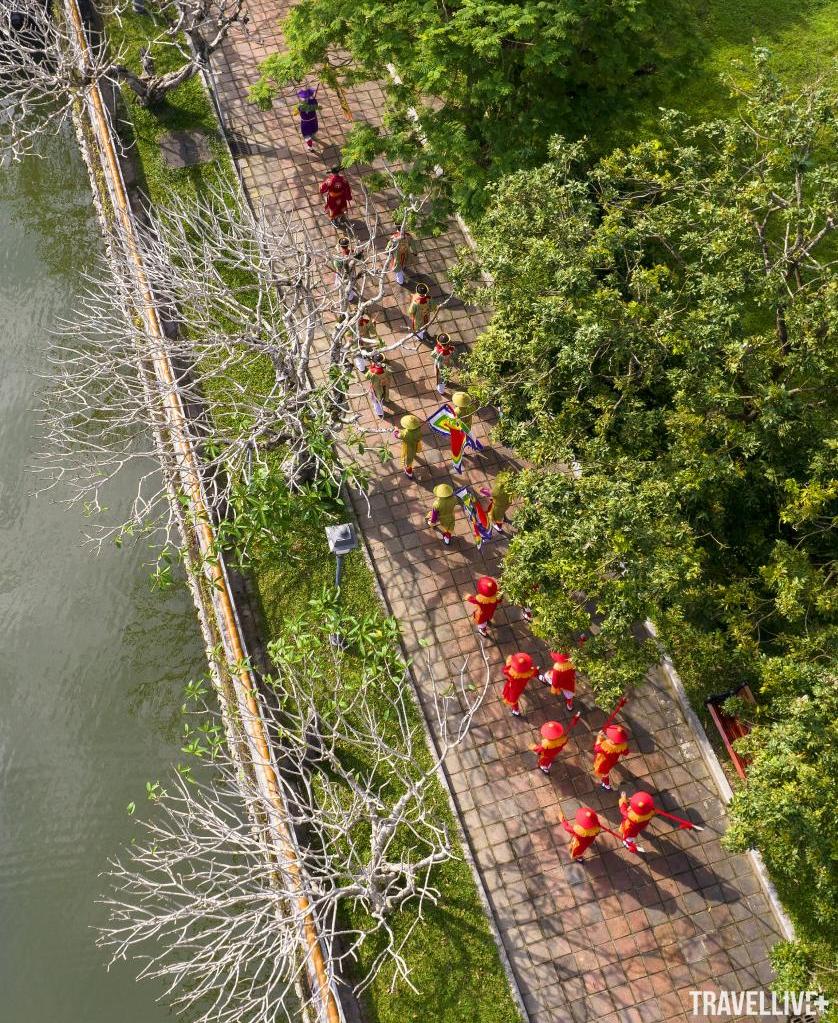
Photo: Le Huy Hoang Hai
Not only in the Imperial City, Hue city has had, is having and will have many other large-scale programs to stimulate tourism in 2022: propaganda for people and touristswearing ao dai on March 8; organize the marathon "For a green Hue" or the traditional boat racing festival;implementing a public bicycle systemin the city center area; and soon, Hue will open "Night Street in the Imperial City area" from April 22 (also the first walking street)no alcohol sold).
It can be seen that Hue is very active in preserving and spreading the heritage - cultural - artistic values of the land of the Gods. The above events and programs take place not only to introduce the city's identity to tourists from outside, but also to raise the awareness of Hue people about their homeland.
Stimulating tourism, and the efforts of both the government and the people
Not only stopping at events promoted through newspapers and media, ifmonitorMore on social networks, you will realize that the new tourism breeze in Hue is contributed by everyone - from leaders to people.
As tourist interest in Hue grows, mixed opinions have emerged online, revolving aroundentrance fee to visit Hue Monumentsis expensive or cheap. Some people expressed that: the current ticket price is too high for a historical attraction, and there should be preferential policies for Hue people when visiting these places.
Without avoiding or responding with any normative documents, Mr. Phan Thien Dinh - Secretary of Hue City Party Committee, gave his opinion on his personal Facebook page. In it, he wrote:
[...] The price of a ticket to visit a relic is not as simple as buying a normal item. It depends on the level of cultural and historical perception; the purpose of visiting the relic and the spending ability of each person.Therefore, for those who focus on studying culture, history, searching for their ancestors' roots, or simply buying tickets to the relic with the thought of contributing a small amount of money to restore and repair the relics left by their ancestors... this fee is not expensive. On the contrary, for those who just come to visit, or just to take souvenir photos, the prescribed fee may be high if they feel bored, uninterested or the service is not attentive [...]
Regarding the idea of reducing entrance fees for Hue residents, Mr. Phan Thien Dinh also left a comment:If we think that heritage belongs only to Hue, we will never have enough money to restore the relics. This is the heritage of Vietnam and the world, everyone has the responsibility to take care of it, restore it, preserve it, and promote it. If Hue demands special treatment for itself, then who will pay money to the Hue Heritage Conservation Fund from outside Hue?
It is worth mentioning that Mr. Phan Thien Dinh is not the spokesperson of the Hue Monuments Conservation Center. The nearly 1,000-word post on his personal page is purely personal. But through it, the public has seen somewhat the frank, civilized and open-minded attitude of those working in Hue tourism.

International visitors return to the Imperial City - Hue. (Photo: Le Huy Hoang Hai)
Along with the organization of government leaders, Hue city people - from young to old - also responded positively. They not only cleaned the streets inGreen Sundayor on holidays; they keep their streets and rivers clean every day. If you come to Hue during this time, it is difficult to find clumps of garbage floating on the Perfume River or strange smells from the street corners. Tourists now are not only familiar with the dreamy purple color typical of Hue anymore, they will also be familiar with the green color of trees and streets.
Perhaps, only in Hue, people can come across funny and "genuine" stories like: a resident discovered someone else illegally throwing a bag of trash in the Perfume River, quickly took pictures of the evidence and... reported it to the authorities, so that the authorities could promptly criticize and warn them.
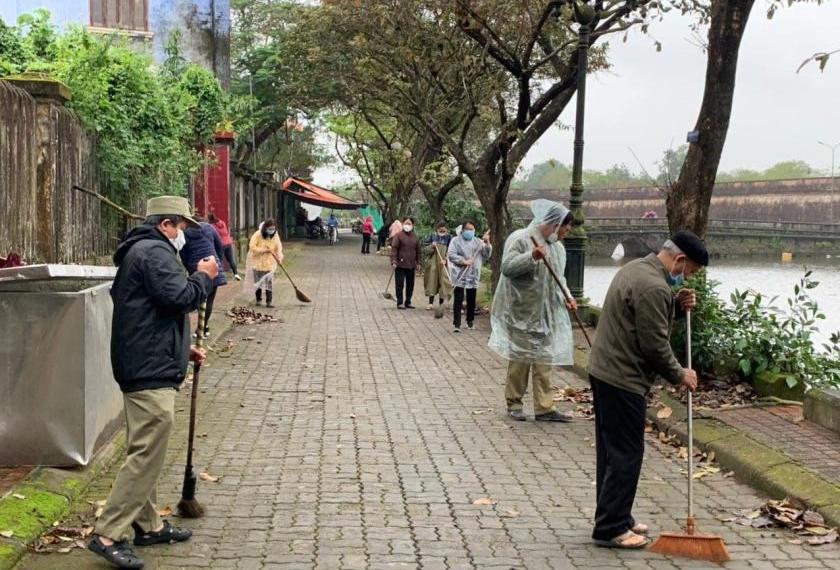
People cleaning the streets together... (Photo: FB Thien Dinh Phan)
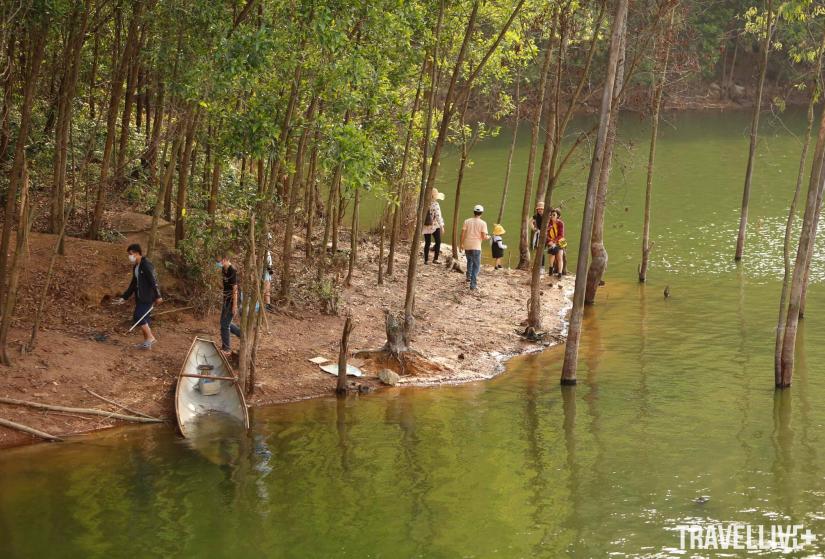
...Young people "invited each other" to clean up a corner of the river (Photo: Lee Ky)

In return, the Huong River is a deep blue. (Photo: Le Huy Hoang Hai)
Shi Jang, CEO of Oriental Sky Travel & Tour, a travel company based in Hue, shared: "In fact, it is not that Hue tourism has changed since the beginning of the year, but that change has been happening for the past few years. The period from 2020 to now is more special because we have seen many clear values. From the city government to the provincial Department of Tourism, everyone is more open and receptive to comments and suggestions from tourism units, tourism workers and tourists. The communication aspect of Hue tourism is also more focused, both in content and form."
"When everyone joins hands, I believe Hue will change in a good direction, making people come back to Hue more, then love and miss Hue more."
Travel, go with culture and history
Recently, in Hue, there has been a story about the relocation of a 100-year-old villa at 26 Le Loi Street. That ancient villa was originally the headquarters of the Union of Literature and Arts Associations of Thua Thien-Hue Province, with French architecture and built in the early 20th century. However, the villa is not on the list.27 typical French architectural works to be preserved in Hue Cityissued by the Provincial People's Committee in early 2018.
According to the plan, the city needs to demolish the villa to build a high-end hotel and commercial service complex in the area. However, up to now, the government has decided to keep this ancient architectural work, even inviting Mr. Nguyen Van Cu - nicknamed "the genie" with the ability to move the most "difficult" houses, to move the villa at 26 Le Loi to another location. Instead of demolishing it as planned, the Hue government has chosen to pay a not small amount of money to keep it.
Mr. Nguyen Van Phuong, Chairman of the People's Committee of Thua Thien-Hue province, shared: "Although this villa is not on the list of 27 French villas in the city that are being preserved, we still decided to keep the villa in the opposite location, with the desire to preserve the soul of Hue city during the development process."
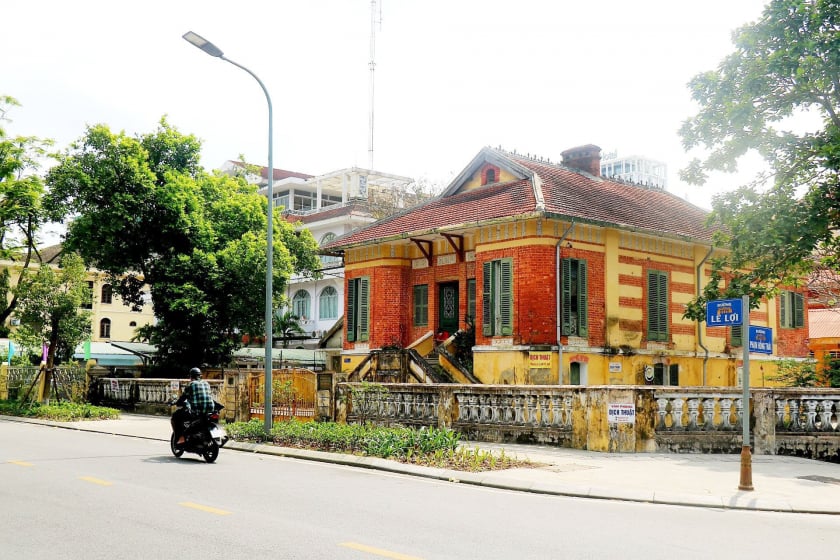
The old French villa at 16 Le Loi, Hue City. (Photo: Natural Resources & Environment Newspaper)

The building was renovated once in 2000, and the structure remains intact.
Hue has just "revived" its tourism industry for nearly 3 months, new projects are still in the incubation and gradual implementation stages. However, if we look at the way people "treat" their roads and streets, and the way the government "treats" an old villa, can we expect a bright future for Hue tourism?
The tourism winds, though new, do not blow anything too luxurious or strange to the ancient capital; but rather act as a kindling torch to help preserve and spread the heritage value of this city. With the determination to develop Tourism - along with Culture and History - of Hue, we can even expect that this development will reach high, far andsustainable, like the walls and solid mausoleums that reside on this land.





